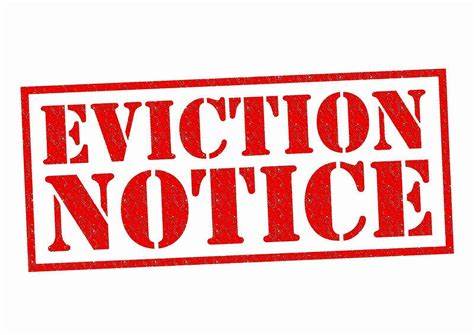As evictions go up and now that major COVID-19 pandemic housing protections have ended, renters should know what Michigan law spells out for both landlords and tenants.
Eviction is the process that allows a landlord to legally remove a renter from their property. It’s illegal for a landlord to force a tenant out of a rental unit without first going to court and obtaining an eviction order, according to Michigan Legal Help, a program funded in part by the Michigan Supreme Court. A landlord also cannot take actions to prevent a tenant from getting into the home, such as changing locks or shutting off utilities.
An eviction order allows a court officer to remove a tenant and their belongings from a property. Sometimes both parties resolve the issues before it gets to that stage. Other times, they take their concerns to court. Either way, Michigan law lays out the steps in the eviction process.
Here is what happens when a tenant receives a notice and what leads up to a court officer knocking on a tenant’s door to remove them from a property, according to Michigan Legal Help and a guide for landlords and tenants from the Michigan State University College of Law:
Reasons behind an eviction
There are many reasons a landlord may evict a tenant, according to state law. Those include:
- Not paying rent
- Not moving when a lease ends
- Violating a lease term
- Causing extensive physical damage to a property
- Creating a health hazard
- Illegal drug activity
- The landlord thinks there is a “just cause” to evict someone from a mobile home park or federally subsidized housing.
The eviction notice
An eviction notice — sometimes called “notice to quit” or “demand for possession” — explains why a landlord wants a tenant to move and how much time the tenant has to act before court action.
The notice must be in writing and include the following: the tenant’s name, address or description of the rental property, reason for eviction, amount of time for the renter to address any issues, date and the landlord’s signature. It must be delivered in-person to the tenant or a family member living in the household and request that it be given to the renter, through mail or electronically via email (if that is a method of communication the tenant agreed to).
After receiving a notice, the tenant has a specified amount of time to remedy the problem. That time frame varies based on the reason for the eviction and ranges from 24 hours to 30 days. Here are some examples, according to Michigan Legal Help: 24 hours for illegal drug activity, 7 days if a tenant hasn’t paid rent or created a health hazard and 30 days for violating a lease term, such as smoking or keeping pets.
A notice is not the same thing as an order of eviction, meaning a renter does not have to move when the notice expires. There are certain conflicts that can be resolved, such as paying back rent. However, there are other issues, such as breach of a lease or illegal drug activity, causing a tenant to have to move out otherwise the landlord could sue them, according to the MSU College of Law guide for landlords and tenants.
After the notice time period ends, the landlord can file a lawsuit and take the tenant to court. A landlord may not be required to give a notice if a renter stays after their lease ends or if someone forced their way into a home and decided to stay in it — also known as squatting or trespassing.
But the landlord can’t do anything to prevent someone from accessing the property before getting a court order. The landlord can’t, for instance, destroy property, board up a home, put belongings out on the street and refuse to make repairs. Michigan Legal Help says that there are instances where a landlord can come into a home. That’s called lawful interference and can happen if the landlord is acting on a court order, entering a home with permission to make repairs or believes the renter abandoned the place or died.
The steps in an eviction
The eviction process can take anywhere from 21 to 57 days, according to the MSU guide. Here’s what that usually entails:
- A landlord must provide notice to the tenant.
- If the tenant doesn’t comply, a landlord can initiate the eviction process by filing a civil lawsuit in district court. The tenant will then receive asummons and complaint letting them know they are being sued and to show up for a hearing.
- If the parties don’t agree to resolve the dispute, a judge is required to make a decision on whether a tenant has to move out or not.
- If a judgment sides with the landlord, the tenant can be evicted. The landlord can apply for an eviction order if the tenant doesn’t leave by a certain time or do some other required action.
- Once that order is filed and signed by a judge, it can be executed by a court officer hired by the landlord plaintiff.
How to get help
For more information about evictions and resources for assistance, visit Michigan Legal Help at bit.ly/MichiganLegalHelpEvictions and the Michigan Attorney General’s website for landlords and tenants at www.michigan.gov/ag/about/landlord. For an in-depth run down about eviction proceedings go to www.legislature.mi.gov/Publications/tenantlandlord.pdf. Reach out to the United Way for Southeastern Michigan’s 2-1-1 helpline for additional assistance.
- How Michigan’s Gov. Whitmer Barbie, known as Lil Gretch, came to be - July 26, 2023
- What Michigan law says about the eviction process - July 26, 2023




